Piece by weathered and rusted piece, Canada's oldest grain elevator comes down
Wood beams, tin siding, even nails and other hardware being salvaged and sold
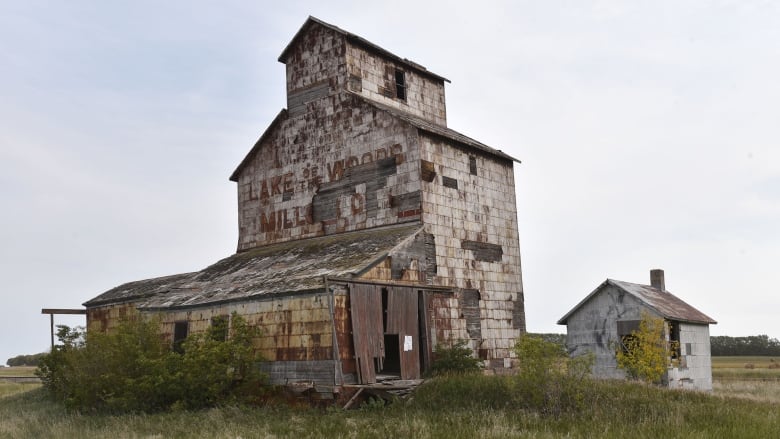
A Prairie sentinel, believed to be the oldest in Canada, is taking itsfarewell bow.
The Lake of the Woods Milling Company grain elevator in the southwest Manitoba hamlet of Elva has shouldered thrashing rains and snow and withstood the baking sun for 125 years.
Now it is being eased into history,board by board and nail by nail.
A similar fate is coming to the former United Grain Growers elevator,built circa 1916, a stone's throw from the Lake of the Woods one.
"It is sad to see these symbols of Prairie Canada come down, but I am pragmatic about it," said Gordon Goldsborough, president of the Manitoba Historical Society.
"I realize we can only keep them if they serve a useful purpose. Having them standing there unused, rotting away, serves no one's interest."

They had been abandoned for so long, theirpoor condition became a public liability, Goldsborough said.
Troy Angus, ownerof The Den Authentic Barnwood, bought both structures last year at an auctionby theMunicipality of Two Borders, which was tryingto recoup unpaid municipal taxes.
His business is to source, salvage and sell antique wood. Angus calls it "rural wood waste management."
He started the deconstructionin January and is starting to resellexterior tin cladding. He outlines afive-phase deconstruction process on his websiteand saidhe is about halfway through the second phase, learning as he goes.
"This isn't something that is really ordinary. There's no textbook to follow on how to do this," Angus said.
He had never taken on a grain elevator until last year, when he was invitedto reclaim wood from one that had already collapsed in southeast Saskatchewan. Angus only needed todeal with Phase 5 then, which isremoving nails, stacking and hauling.
Even then, it took a long time. A wooden elevator has as many as 2,250kilograms (5,000 pounds) of nails.
"When these giants come down, it is a mountain of wood," Angus said.
In most cases,the lumber and nailsendup in landfills.
"For us to have the opportunity to intercept and collect upwards of 50,000 board-feet within a short time period was enough of a test to want to go ahead and give it another try," he said.
Or in the case of Elva two tries.
"It's growing, every day, my appreciation for these buildings," Angus said.
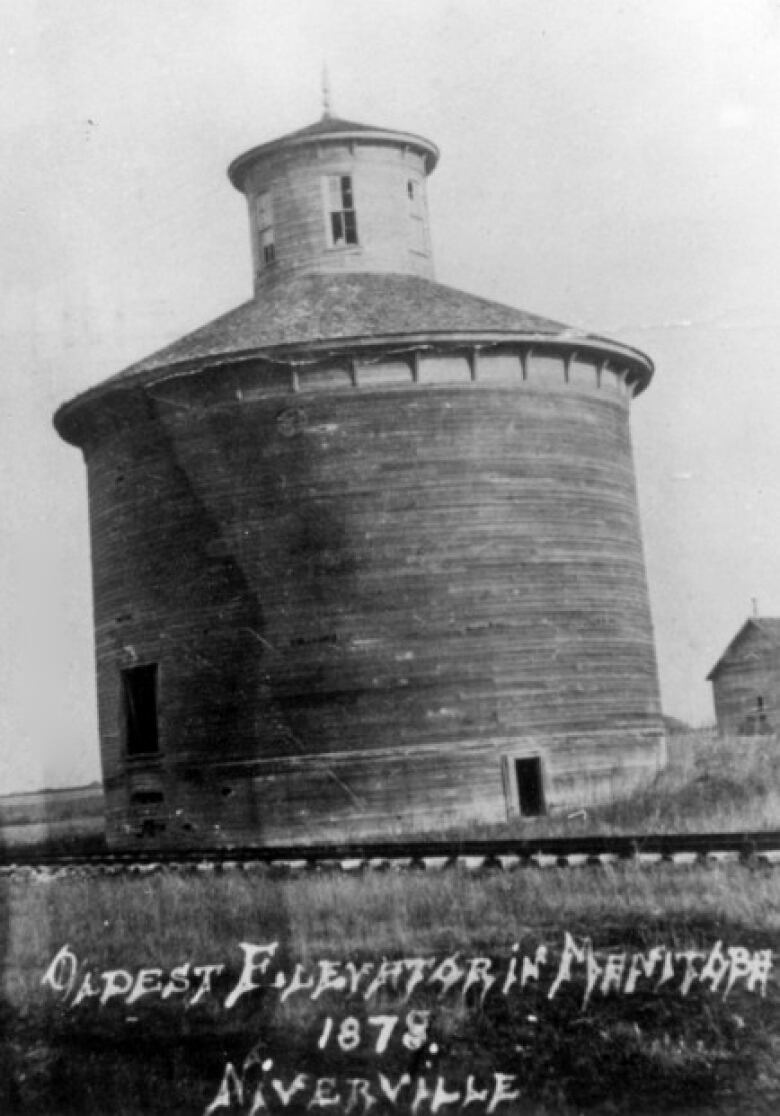
He's had loads of people "coming out of the woodwork, you might say" to share nostalgic stories about growing up around those particular elevators or others.
"It's just amazing, the connection that there is to these elevators across Canada," Angus said. "There's an emotional tie and that historical tie.
"This is the breadbasket [of the country] and these were a major staple at one time. They still are, but not the wooden grain ones as much."
Built in September 1897, the Lake of the Woods elevator took the crown as oldest after the 1895 elevator in Fleming, Sask., burned to the ground in 2010, according to Vantage Points, a publication of theTurtle Mountain-Souris Plains Heritage Association.
The Lake of the Woods elevatoris a squat style standard-plan design, common before1910when the taller style, used for the UGG elevator, became popular.
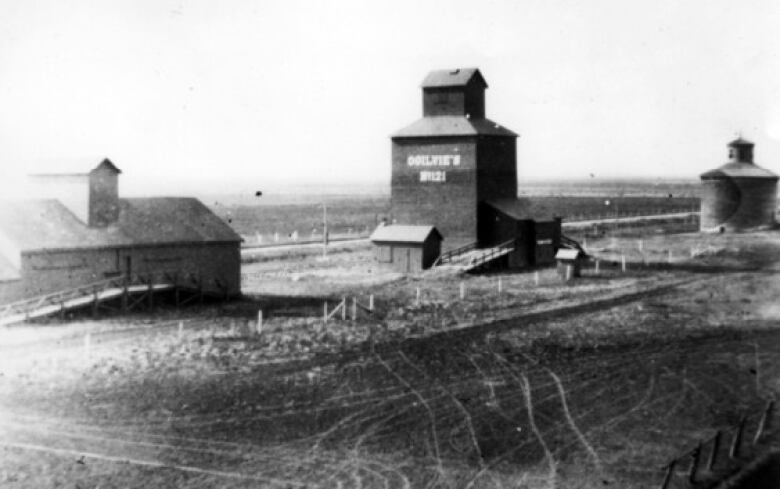
But the first commercial grain elevator in western Canada wasround. It was built in 1878 in Niverville, according to A History of Grain Elevators inManitoba, by the provincial government. The first standard-plan elevator was built in 1881 in Gretnaand demolished in the early 1990s.
Modern elevators of steel and concreteless prone to fires and water leaks, more impervious to rodents and insects have since taken over.
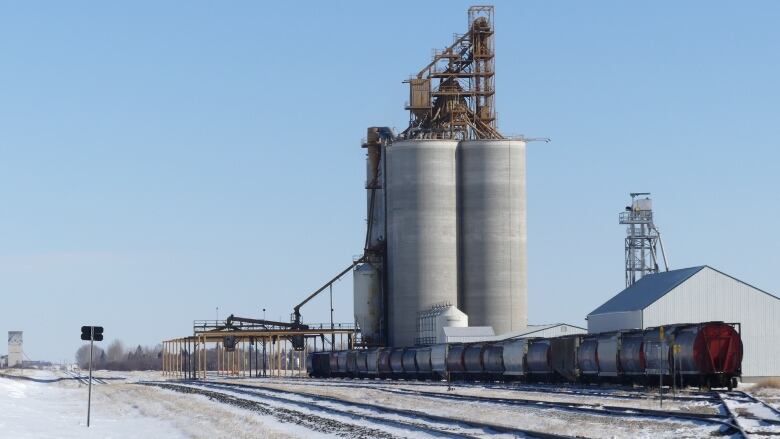
Both of Elva's old grain elevators sit on a belt of grass sandwiched between a CPR line and the gravel path of Railway Avenue.
They are the last of what was four wooden elevators in a row, creating a skyline during Elva'sheyday at the turn of the 20th century.
The area remains a bustling grain community and is still served by the railway line, but grain is now stored three kilometres away in a multi-silo structure that opened in 2000 and was later expanded.
Elva is midway between the slightly larger community of Pierson and the town of Melita. Angus's home and business is in Pierson, which made theproject convenient and made it easier forhim to assess the structures.

Holes have let in rain and snow for decades,causing the foundations and the walls to deteriorate and giving the Lake of the Woods elevator a distinct lean.
Still, Angus believes the wood value "is going to be substantial," perhaps with about 75 per cent of it salvageable.

Goldsborough, whosefixation on grain elevators has led him to document many across the province, said the wood can be magnificent, especially in the legthe section wheregrain wasraised from the base to the top.
It often has sculpted patterns caused by a century of grain abrasion, he said.
Getting to the legis Phase 3, which comes after annexes have been removed. Phase 4 is when the elevators are gently laid onto their sides to further disassemble.
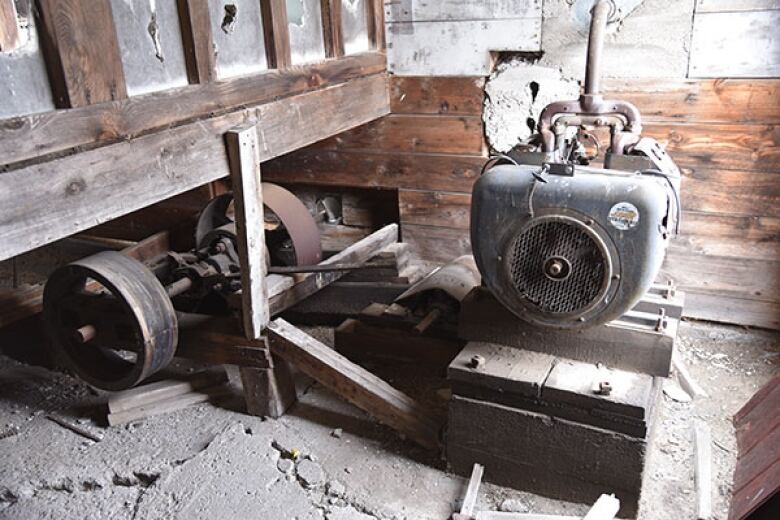
Angus is aiming to do that before the ground thaws andGoldsborough is on standby.
"I hope I can be there. I'd like to witness the final hours of Canada's oldest elevator," he said.
The next-oldest,built in Austinin 1901 and latermoved to the nearby Manitoba Agricultural Museum, will then take the mantle.
Some people sayPort Perry has the country's oldest elevator, built in 1874, butGoldsboroughsaid it's more of a warehouse-style design,notstandard-plan, which is synonymous withthe iconic sentinels.
"There's also an old elevator in Edmonton but, again, not in a format that anyone would associate with the Prairie stereotype," he said.
With files from Stephanie Cram and Thibault Jourdan












_(720p).jpg)


 OFFICIAL HD MUSIC VIDEO.jpg)
.jpg)



























































































